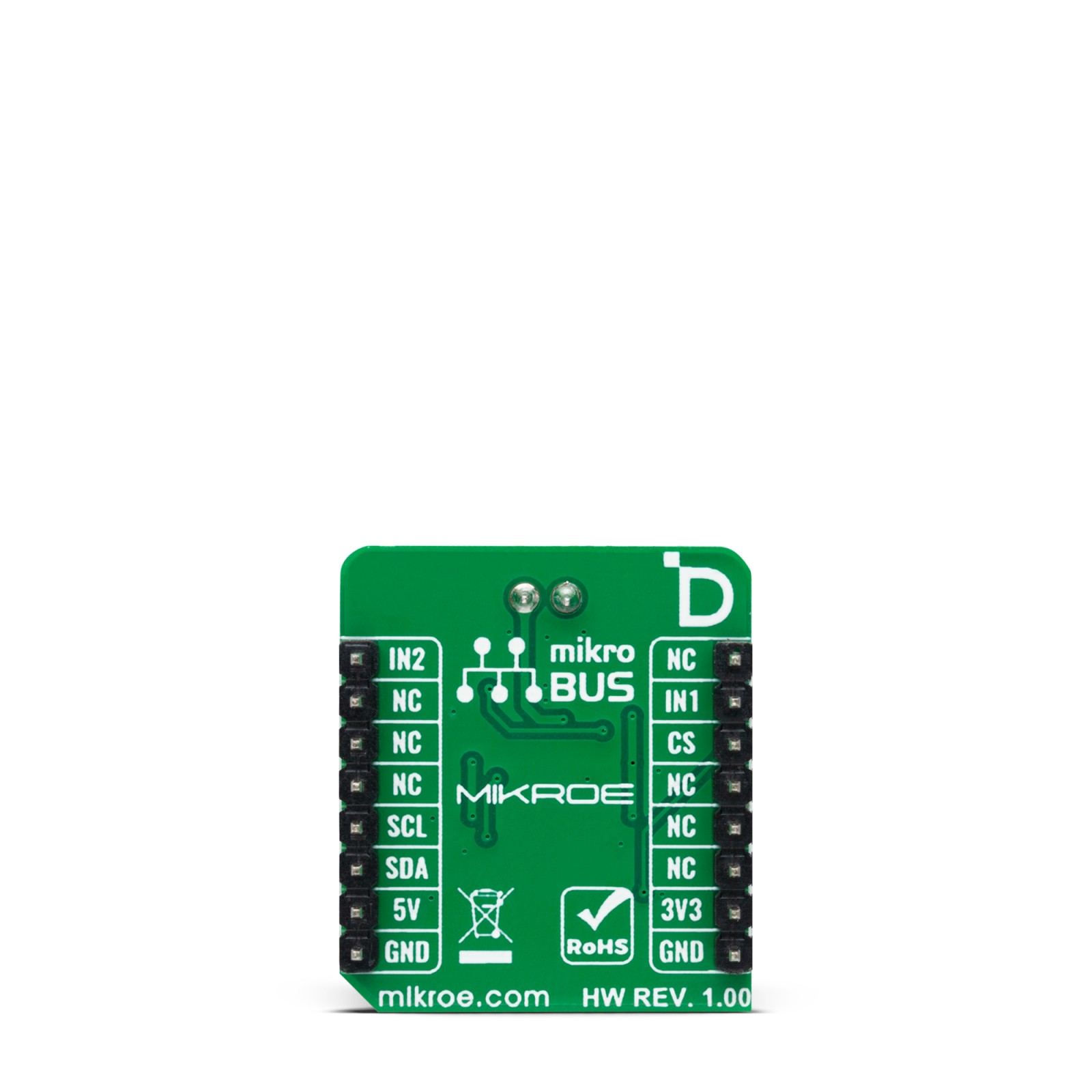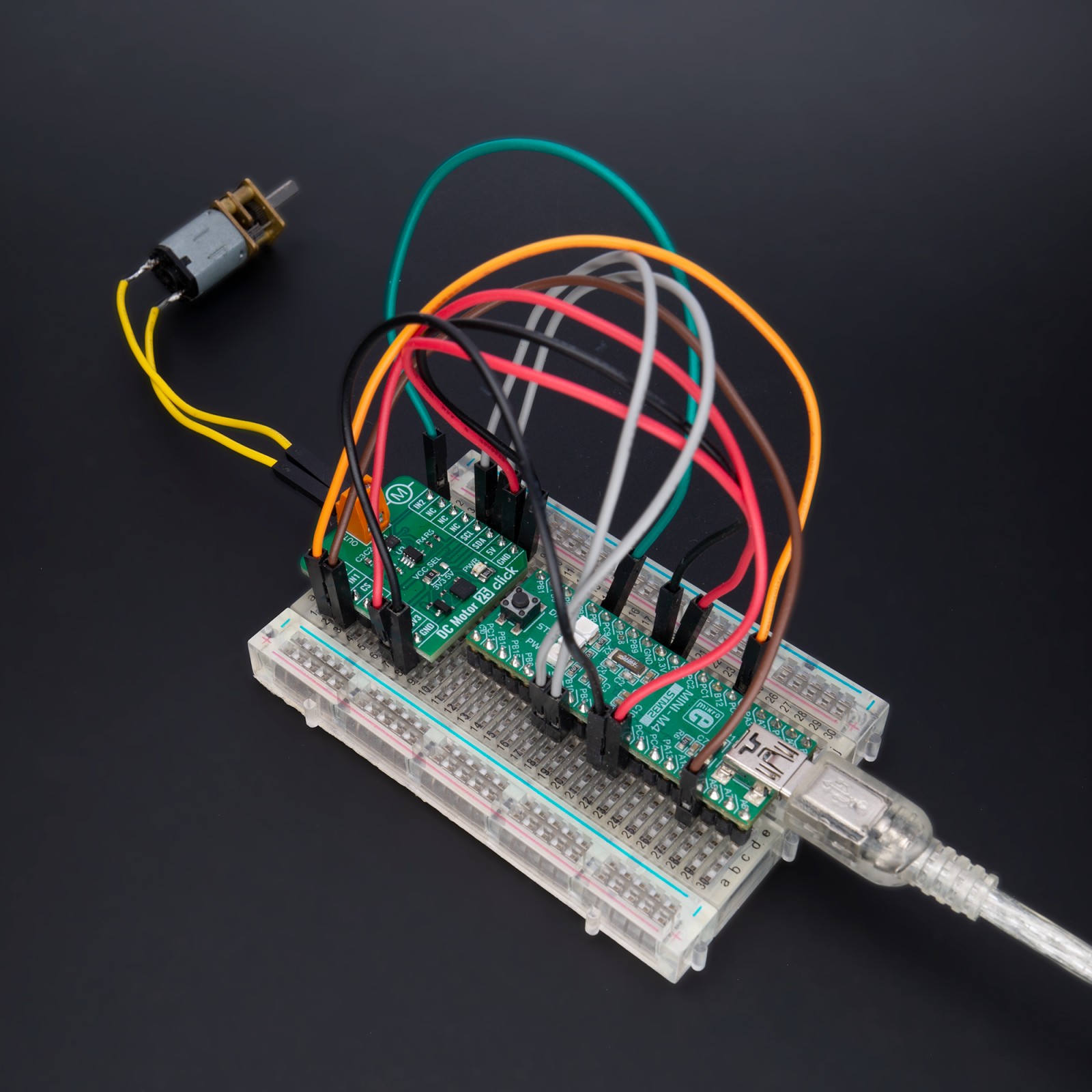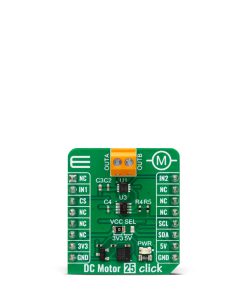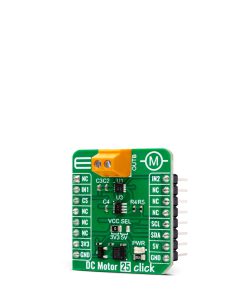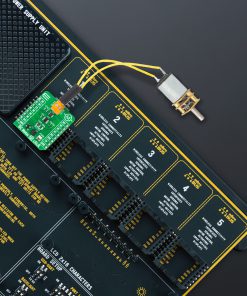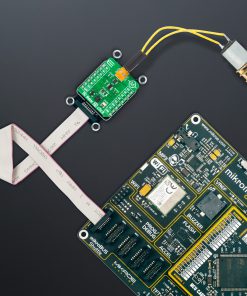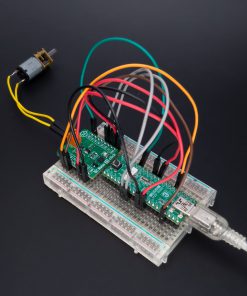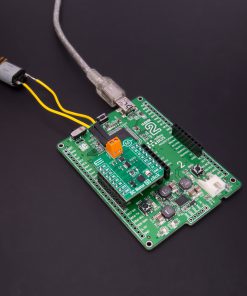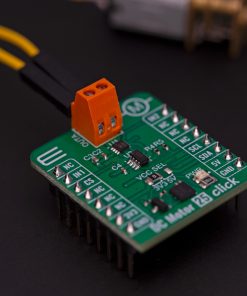DC Motor 25 Click
R330.00 ex. VAT
DC Motor 25 Click is a compact add-on board with a brushed DC motor driver. This board features the A3908, a low-voltage bidirectional DC motor driver from Allegro Microsystems. The A3908 is rated for an operating voltage range compatible with mikroBUS™ power rails and output currents up to 500mA. The unique output full-bridge incorporates source-side linear operation to allow a constant voltage across the motor coil. Logic input pins are provided to control the motor direction of rotation, brake, and standby modes. It also has complete protection capabilities supporting robust and reliable operation. This Click board™ is suitable for controlling DC motors applications like robotic actuators and pumps, battery-powered toys and games, low-noise instrumentation systems, and many more.
DC Motor 25 Click is fully compatible with the mikroBUS™ socket and can be used on any host system supporting the mikroBUS™ standard. It comes with the mikroSDK open-source libraries, offering unparalleled flexibility for evaluation and customization. What sets this Click board™ apart is the groundbreaking ClickID feature, enabling your host system to seamlessly and automatically detect and identify this add-on board.
Stock: Lead-time applicable.
| 5+ | R313.50 |
| 10+ | R297.00 |
| 15+ | R280.50 |
| 20+ | R269.94 |



